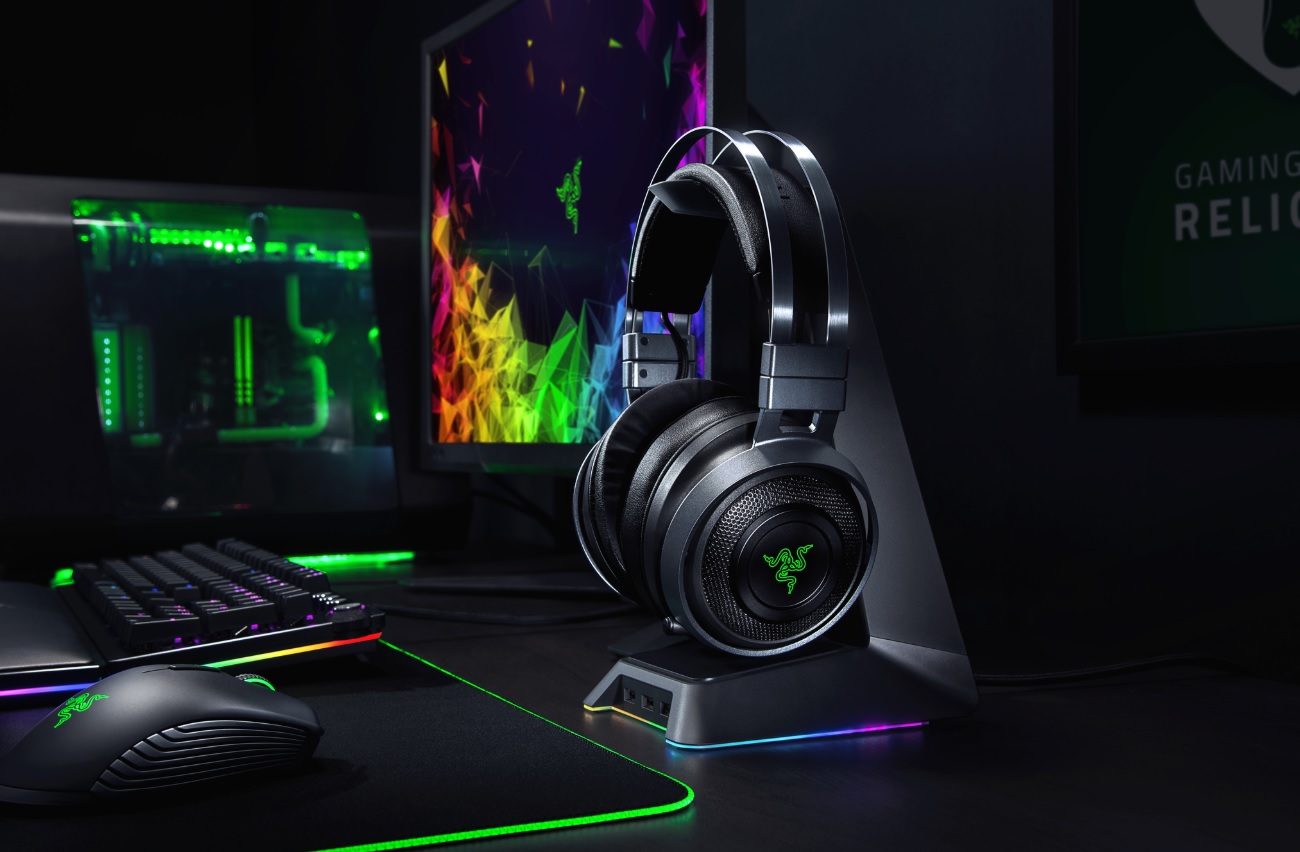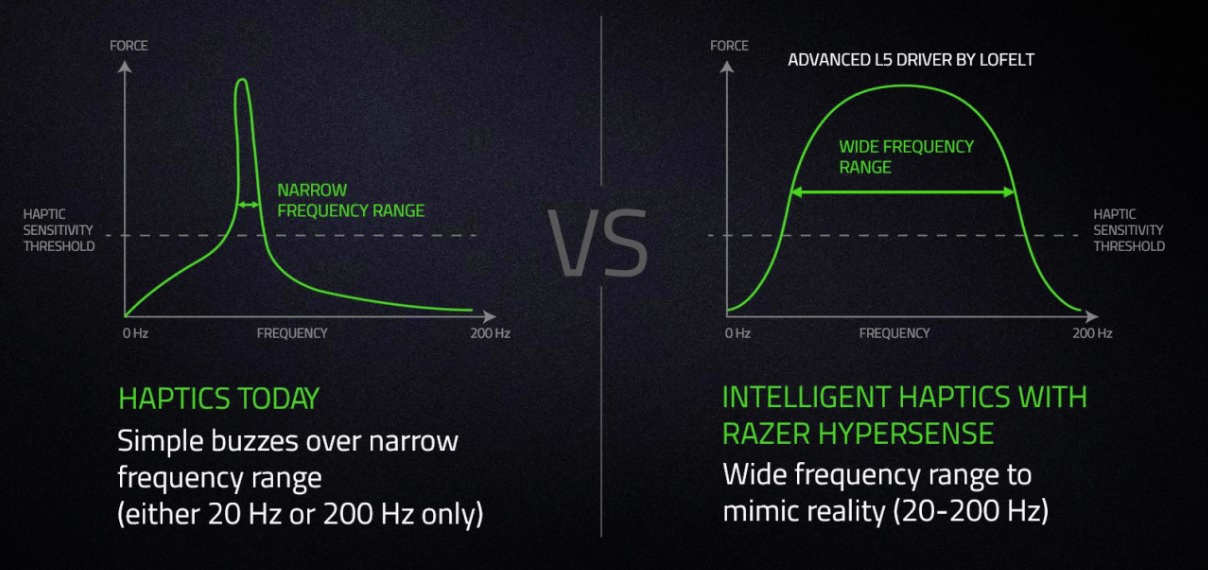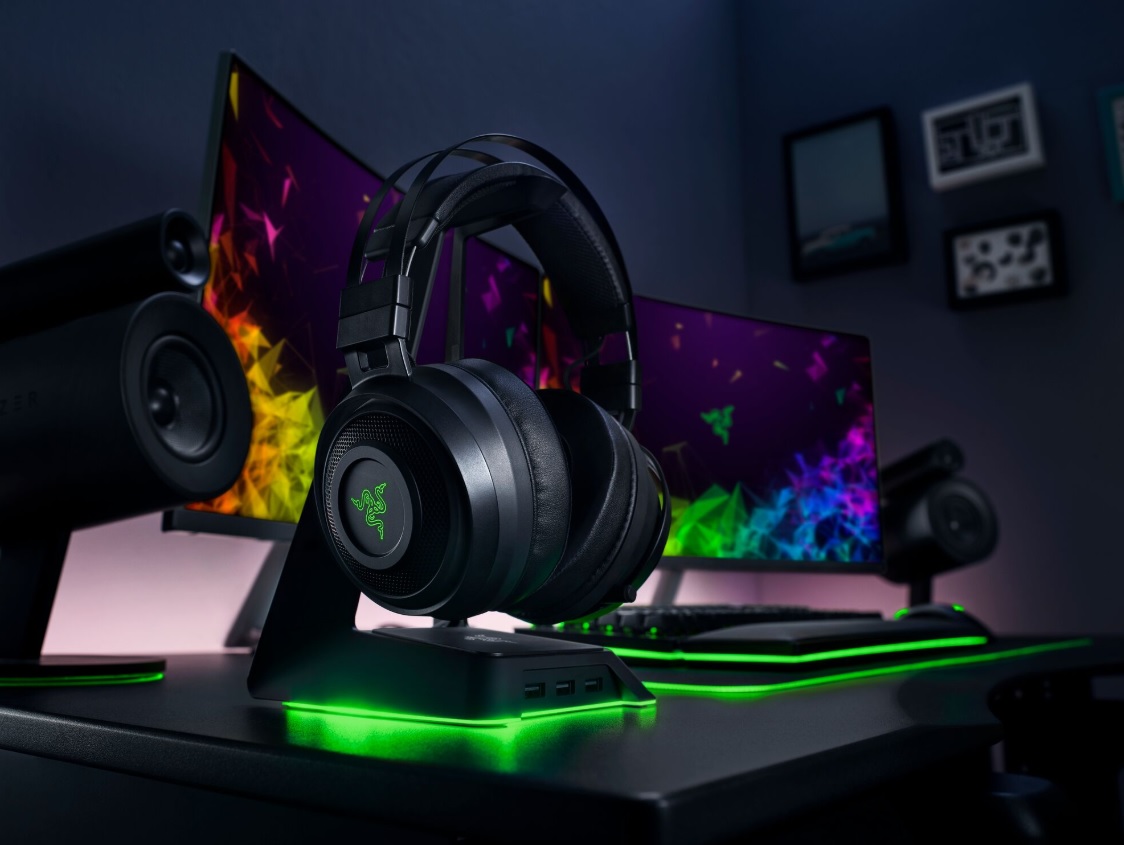Razer is known for riding the, uh, razor’s edge when it comes to products for gamers. And the Razer Nari Ultimate wireless gaming headset fits right in with that image.
The Razer Nari Ultimate comes with Razer HyperSense, an advanced haptic (or touch) technology that delivers pulse-pound vibrations that make you feel the sound from your games. The tech, developed by German engineering firm Lofelt, makes you feel touch-sensory feedback based on the audio cues from a game.
I tried out the Razer Nari Ultimate while playing Doom, which has a very loud soundtrack of heavy metal music and some exceedingly noisy explosions from rocket launchers, shotguns, and assault rifles. It was very lifelike and immersive, but it also shook my glasses. I had to adjust my glasses and put the headset back on.
The idea is definitely an intriguing one, to have motion actuators built into a device that is connected to your head in order to convince your brain that you’re really immersed in an artificial world.
June 5th: The AI Audit in NYC
Join us next week in NYC to engage with top executive leaders, delving into strategies for auditing AI models to ensure fairness, optimal performance, and ethical compliance across diverse organizations. Secure your attendance for this exclusive invite-only event.
“Haptics today has unrealized potential, as it provides tactile information and improves immersion,” said Melvin Ng, product marketing manager at Razer, in a briefing.

Above: Razer Nari Ultimate has a retractable mic.
And Razer HyperSense utilizes haptic drivers that generate multidimensional haptic feedback, enhancing positional awareness with stereo capabilities. By contrast, the haptic actuators in smartphones are like simple, one-dimensional buzzers. With such actuators, a grenade blast feels just like getting hit by a bullet.
With Razer, the haptics are more like 3D, not 2D or 1D. The HyperSense utilizes L5 haptic drivers developed by Lofelt to convert sound signals into touch-sensory feedback. The vibrations are more like high-speed oscillations, like with a plucked guitar string. The Nari Ultimate works on a wide frequency range from 20 hertz to 200 hertz, not just a single point of frequency, thanks to its dynamic digital signal processing.
The technology works across all formats of gaming, music and movies without specific integration by converting audio signals into tactile feedback in real time. That means you don’t have to customize a game or movie or music in order to produce the haptic effects in your ears.

Above: Razer uses intelligent haptics with the Nari Ultimate headset.
But if you listen to something that is crafted for 3D audio, like some YouTube demo videos that I listened to, you can hear a real difference. In one 3D audio track, I was able to hear sounds coming from different directions. When I turned off the haptics, I didn’t feel the directional cues as much. When I turned them on again, it felt like I could identify the direction of the sound better. The Razer Nari Ultimate also utilizes THX Spatial Audio which was introduced with the Kraken Tournament Edition. It simulates 360-degree sound that can increase your awareness of your surroundings in a game. If a tank rolls by you on the left side, you hear it more on the left cup.
The Nari Ultimate was also engineered with comfort technology. That includes an auto-adjusting headband, swiveling ear cups to fit every head shape, and cooling gel ear cushions that keep gamers feeling cooler for longer periods of time compared to traditional memory foam ear cups.
The cooling gel ear cushions feature hidden indented eyewear channels for a more comfortable fit with eyewear, as well. It’s an odd feature, for sure, but the cooling gel keeps you cool when playing long game sessions. The battery lasts about eight hours with Razer Chroma lighting and HyperSense, and 24 hours without Chroma.
The haptics certainly affect your glasses, but there are hidden eyewear channels in the cushions that relieve pressure on your temples when wearing glasses.

Above: Razer Nari
This feature creates realistic depth and immersion by simulating 360-degree sound with pinpoint accuracy for greater awareness during gameplay. The headset works in both wired and wireless mode for added compatibility across PC, Xbox, PlayStation, Nintendo Switch and mobile devices.
“Razer consistently creates products with innovative technology to give gamers the best gaming experience possible,” said Razer CEO Min-Liang Tan, in a statement. “With the Razer Nari Ultimate, we are championing a whole new way for gamers to feel their games through Razer HyperSense.
The Razer Nari is available in three versions: Razer Nari Ultimate, Nari, and Nari Essential. The Razer Nari Ultimate described above delivers the most gaming audio value for gamers at $200. The Razer Nari at $150 omits Razer HyperSense while mirroring the Razer Nari Ultimate in comfort, sound technology and all other features. The Razer Nari Essential focuses on core wireless gaming headset features with THX Spatial Audio, comfort with an auto adjusting headband, and cooling gel ear cushions and lag-free performance at $100. It has Razer Chroma compatibility, with 16.8 million color options, and a retractable microphone.
I am not yet convince that I want to wear a headset like this for hours at a time, as the pounding you get from the vibrations could get to be annoying. But then again, perhaps I need to play calmer games than Doom if I want to avoid all of that pulse-pounding noise.


